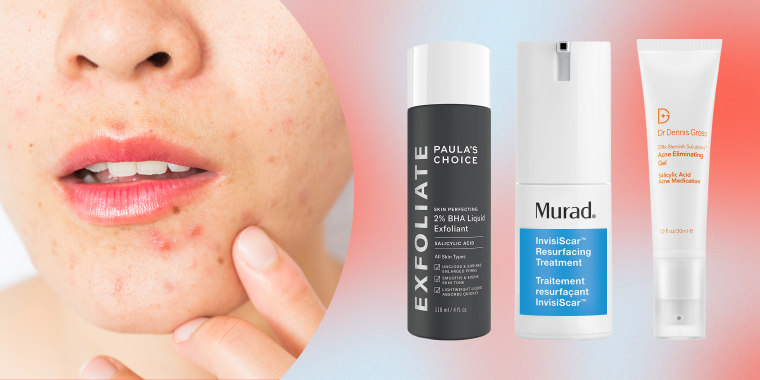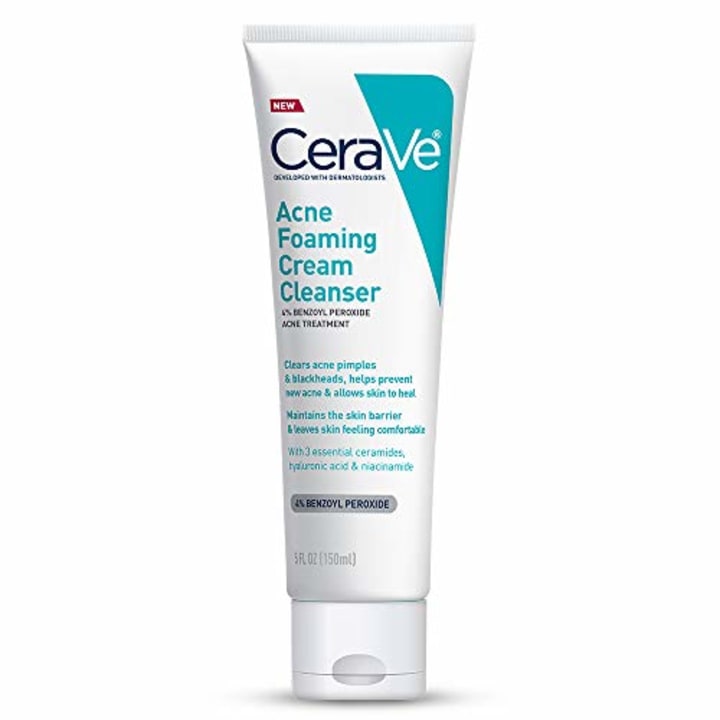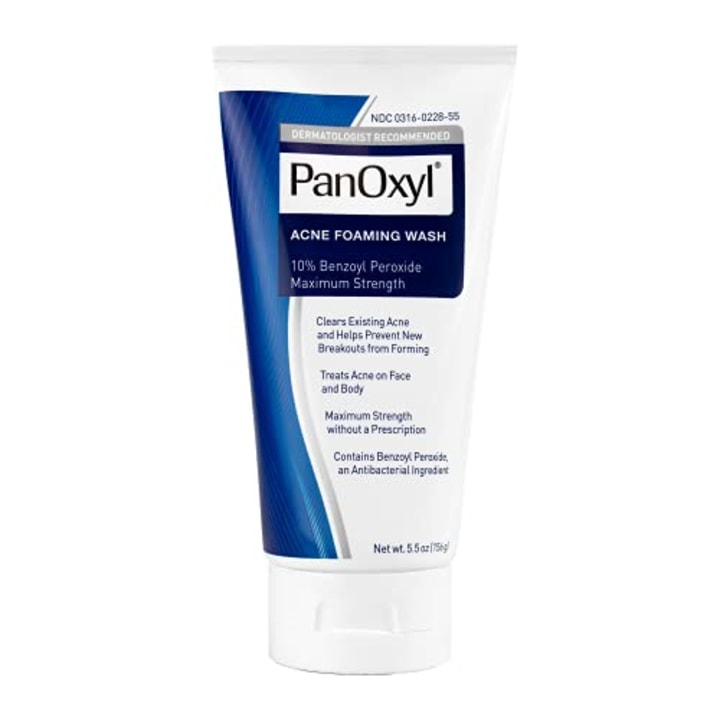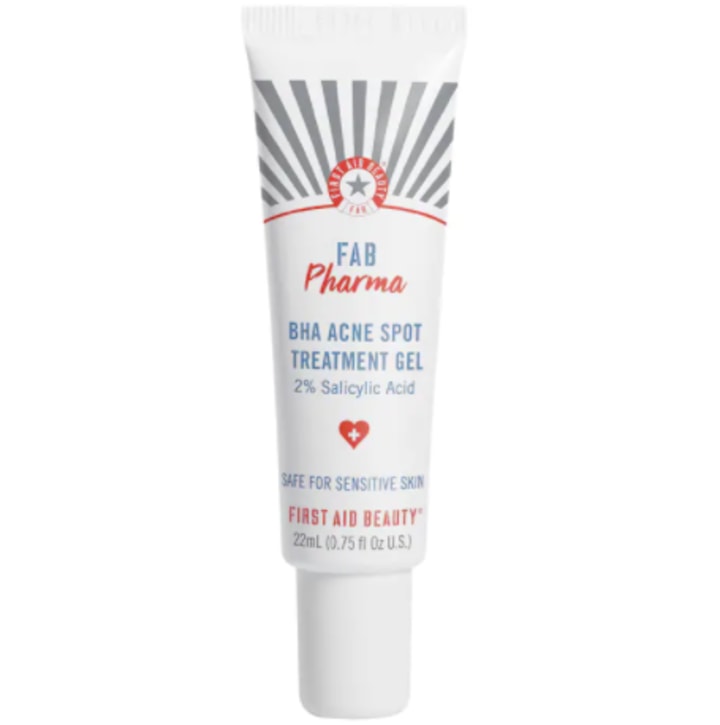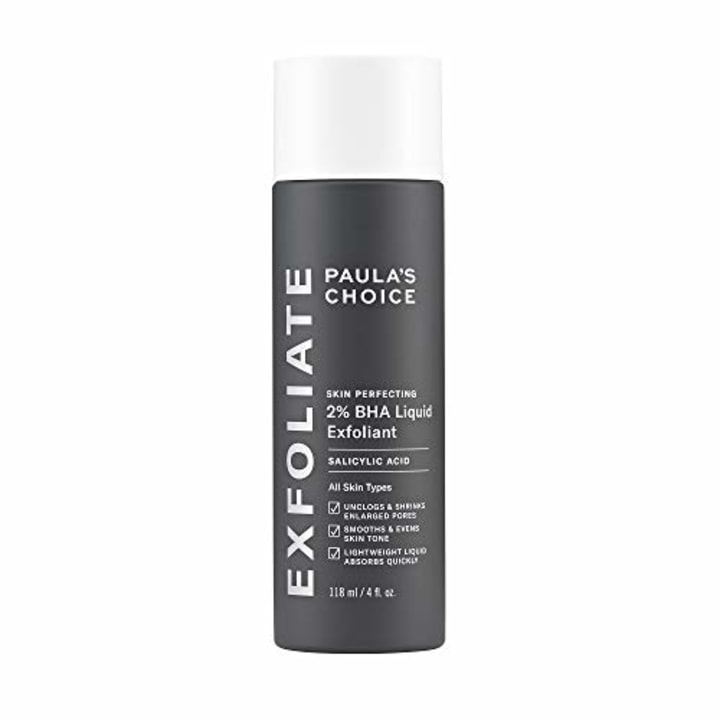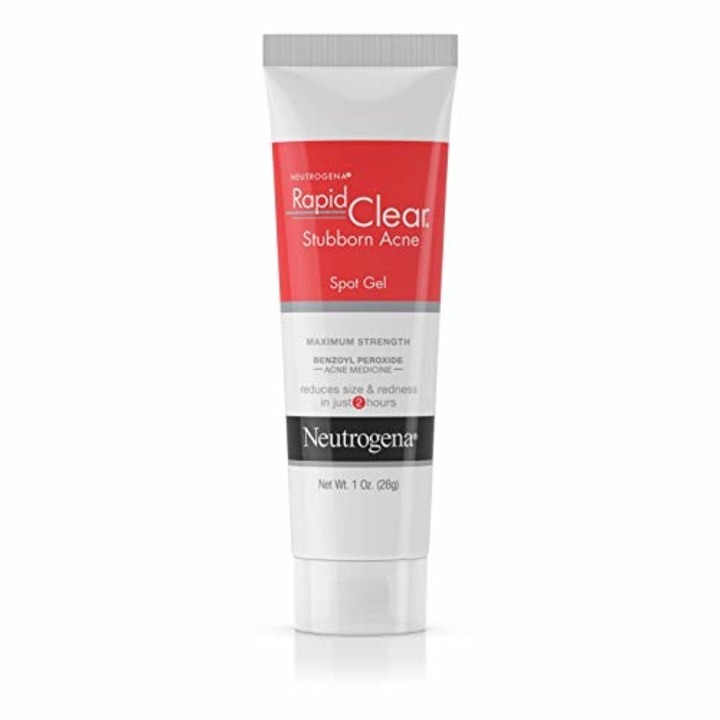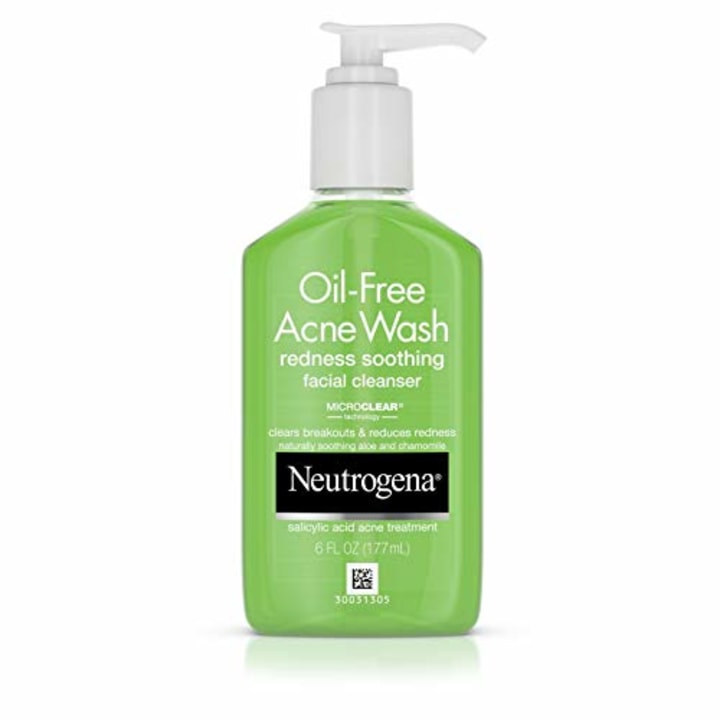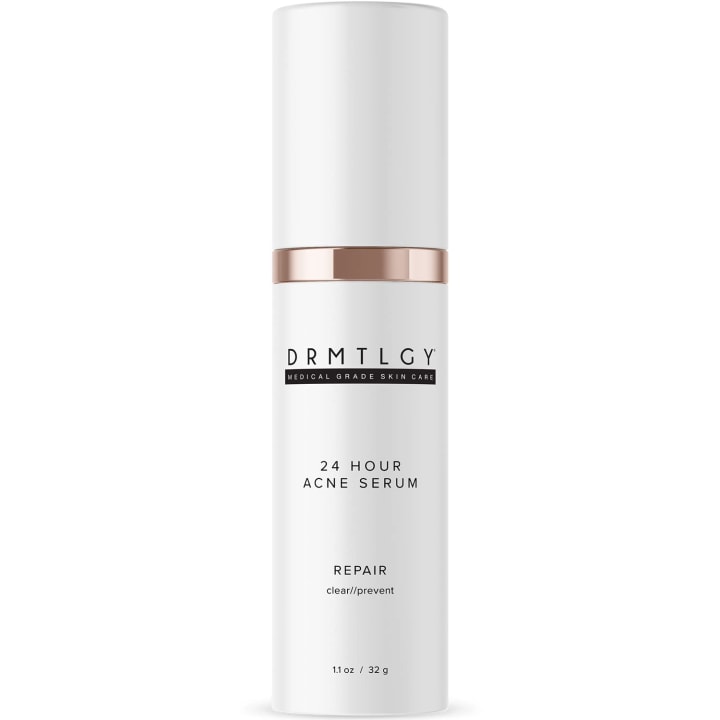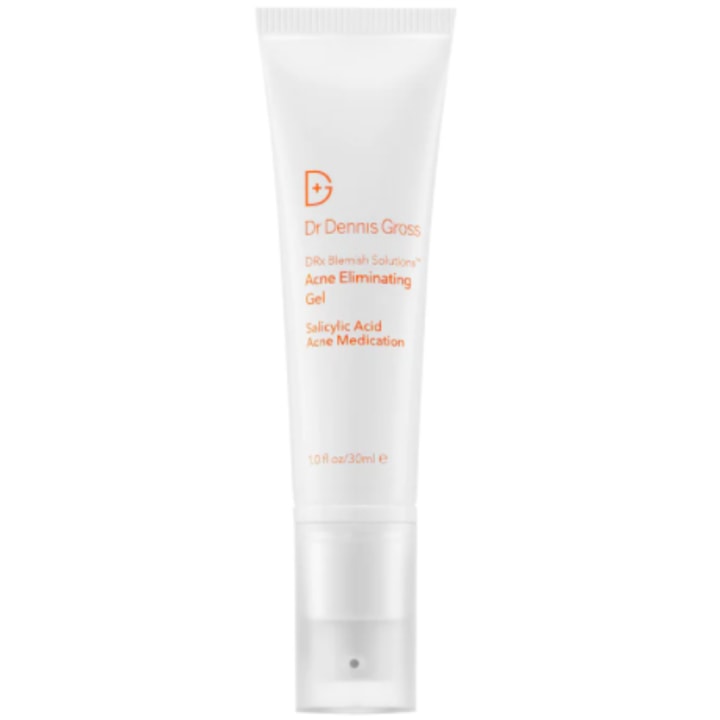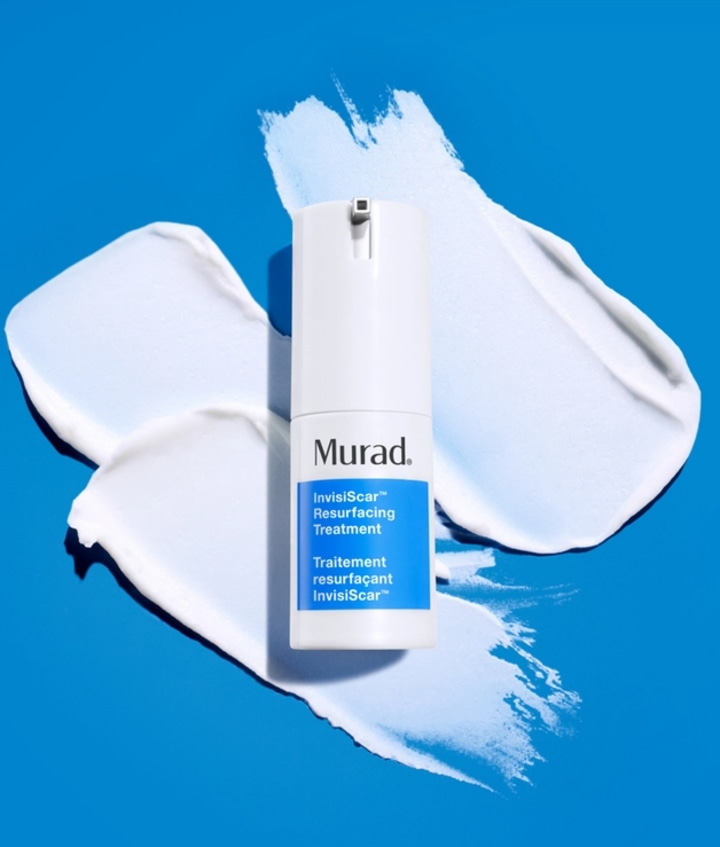At one point or another, almost everyone has dealt with acne, especially as a teenager. We’re no stranger to the ill-timed pimple before an event that feels mountain-sized (but is usually never actually that big).
While most pimples are surface level and can be taken care of with the right cleansers or over-the-counter topicals, that’s not always the case. For some, acne is a larger issue that has deeper roots in the skin. This is called cystic acne and it’s not as easy to get rid of as your typical whitehead.
To gain an understanding of how cystic acne works and how to treat it properly, Shop TODAY consulted two board-certified dermatologists for their expertise.
What is cystic acne?
Acne occurs when there is an overproduction of oil on the skin and pores get clogged, explained Chicago-based dermatologist Dr. Omer Ibrahim. Those clogged pores can become enlarged, forming cysts underneath the skin and they can even pop in that confined space, leading to inflammation and destruction of the normal structure of the skin which includes normal hair follicles and collagen.
“These focal areas of intense inflammation end up eating away at the collagen and eventually leading to scarring,” he said.
Cystic acne is different from your typical acne because it is rooted deeper in the skin — much more so than the blackheads, whiteheads, red pimples and pustules you’re probably thinking of, founder and medical director of Toronto Dermatology Centre Dr. Ben Barankin told us. While he said this type of acne occurs most commonly on the face, it can also appear on the back, chest and shoulders.
What causes cystic acne?
Hormones, genetics, medications, diet and stress are a few things that can both cause and aggravate cystic acne, according to Barankin and Ibrahim.
While the effects of hormones, genetics and most medications are things you can’t control, diet and stress are two lifestyle factors that you can manage. They both mentioned diets that feature a lot of high glycemic index foods can aggravate cystic acne, as well as your dairy intake. (For example, both dermatologists said skim milk is more aggravating than regular two percent milk).
Other factors that contribute to worsening cystic acne include wearing heavy makeup for long periods of time and not washing it off properly; taking whey protein several times a day for muscle-building purposes, which Ibrahim said can exacerbate the issue; using too many comedogenic skin care products; and wearing occlusive materials like athletic equipment.
“We have a lot of patients that are self-proclaimed ‘skin care junkies’ but sometimes — most of the time — too much of a good thing can be a bad thing,” Ibrahim noted.
How to treat cystic acne
Standard acne treatments come in the form of creams, cleansers and gels that are available in your local drugstore. Since cystic acne is rooted deeper in the skin, you should start by seeing a dermatologist for treatment. Both dermatologists recommend seeing a professional as soon as possible to reduce risk of scarring and the acne worsening.
One of the first things your doctor will do with you is reset your skin care routine, especially if they recommend you use retinoids, Ibrahim told us. He said patients can use benzoyl peroxide products as a wash or leave-on product because it’s anti-inflammatory, antibacterial and will help the retinoid work better for your skin. Of course, you must follow up with moisturizer and sunscreen because retinol can leave your skin more sensitive to the sun.
The one product you should skip? Toners.
“If you actually use toners, sometimes it can over dry out the skin and when the skin is dried out, it reflexively produces more oil to protect itself because it feels that it’s dry so that can actually exacerbate acne,” he said.
Other helpful ingredients he mentioned that can be found in washes or leave-on products are salicylic acid and glycolic acid.
Tips for managing cystic acne
Whether this is your first time dealing with cystic acne or you’re well-versed in treatment plans, Ibrahim and Barankin shared a few more tips to guide you along the way.
Get help sooner rather than later. Echoing the same sentiment from the very beginning, they both hammered the point once more and recommended that anyone dealing with cystic acne see a dermatologist immediately. “I tell patients and [their] … guardians, whomever it may be, that acne is temporary but scarring is forever,” Ibrahim said. “If it’s deep, if it’s tender, if it’s scarring: get help sooner rather than later. And know that you’re not alone,” Barankin offered.
Do your research! Barankin suggests reading up on acne to get a better sense of what you’re dealing with. He recommends visiting the American Academy of Dermatology for “high-quality, scientific and non-biased information” about cystic acne.
Manage your stress and sleep well. Like Barankin and Ibrahim mentioned, stress can aggravate existing cystic acne so do your best to be well-rested both physically and mentally to try and keep your treatment process smooth.
Have a good skin care routine but don’t DIY it. While both doctors recommend having a good skin care routine, the last thing you want to do is attempt to fix it all at home before seeing a professional and potentially make matters worse. Ibrahim said over-the-counter treatments and things like at-home chemical peels can cause irritation, allergic reactions and even burns. "Always seek the care of a board-certified dermatologist to get your care started,” he advised.
With all of these tips in mind, we found a few top-rated products that feature key acne-fighting ingredients that you can use during and after dealing with cystic acne.
Products to help manage cystic acne at home
CeraVe Acne Foaming Cream Cleanser
With 17,000 verified five-star ratings, this CeraVe acne cleanser is a top pick for Amazon shoppers. It's made with four percent benzoyl peroxide, hyaluronic acid and niacinamide; the latter ingredients providing hydration to the skin while the former combats acne.
PanOxyl Acne Foaming Wash
If you've tried lighter concentrations and/or have discussed trying something stronger for at-home cystic acne management with your dermatologist, this bestselling acne foaming wash is made with 10 percent benzoyl peroxide. It has at least a four-and-a-half star rating at Amazon, Walmart and Target from a combined nearly 25,000 shoppers.
First Aid beauty FAB Pharma BHA Acne Spot Treatment Gel
If you're dealing with acne scarring, a spot treatment could be beneficial for working on fading marks over time. It contains two percent salicylic acid, acids and fruit enzymes that are meant to help diminish the appearance of marks left behind post-acne, according to the brand's description.
Paula's Choice Skin Perfecting 2% BHA Liquid Exfoliant
Described by the brand as a "gentle non-abrasive leave-on exfoliator,"' this product touts benefits like unclogging enlarged pores, exfoliating dead skin cells and evening out skin tone. It has over 47,000 verified five-star ratings.
"I’ve spent probably thousands on a multitude of different products, trying to find one that would at least make a dent. I’ve had many procedures, many trips to the dermatologist. Nothing I’ve ever used, nothing I’ve ever done, has made such a profound difference in the appearance of my skin," raved one reviewer. "I’ve been trying to turn my skin around for YEARS!! This was the product that did it. If I could give it 100 stars I would."
Neutrogena Rapid Clear Stubborn Acne Spot Gel
Another maximum strength option, this acne spot gel from Neutrogena's Stubborn Acne line is made with 10 percent benzoyl peroxide. Not only is it formulated to tackle current breakouts, it's also meant to help prevent future breakouts.
Neutrogena Oil-Free Acne and Redness Facial Cleanser
Cystic acne often appears red and inflamed, so you might want to look for a cleanser that will assist with toning down the redness. This cleanser contains salicylic acid, aloe and chamomile to combat acne while providing a soothing factor.
DRMTLGY 24 Hour Acne Serum
Benzoyl peroxide and glycolic acid join forces in this serum to fight blemishes and clear skin. According to the product's description, the glycolic acid exfoliates to help increase cell turnover which can lead to reduced scarring.
Dr. Dennis Gross Skincare DRx Blemish Solutions Acne Eliminating Gel
Niacinamide is the ingredient in this acne spot treatment that is meant to reduce the appearance of marks left behind by acne. It touts additional benefits like reducing redness, unclogging pores and soothing the skin.
Murad InvisiScar Resurfacing Treatment
This cream is specifically designed to target acne scarring and boasts results in just eight weeks but one shopper said they saw it even sooner.
"I get random flare-ups or hormonal acne that attacks my entire jawline/cheeks and leaves awful scarring. Within 3 weeks, over half of the scars are gone, and all of them are faded," they wrote.
For more stories like this, check out:
- I finally tried retinol in my 40s — and I wish I'd done it sooner
- This compact beauty product will become a summer staple if you have oily skin
- Can you overwash your face? Here's what an expert says
- I tried this TikTok-famous cleansing balm — it melts away my makeup in seconds
- A complete guide to building a skin care routine for your 40s, according to derms
Subscribe to our Stuff We Love and One Great Find newsletters, and download our TODAY app to discover deals, shopping tips, budget-friendly product recommendations and more!
